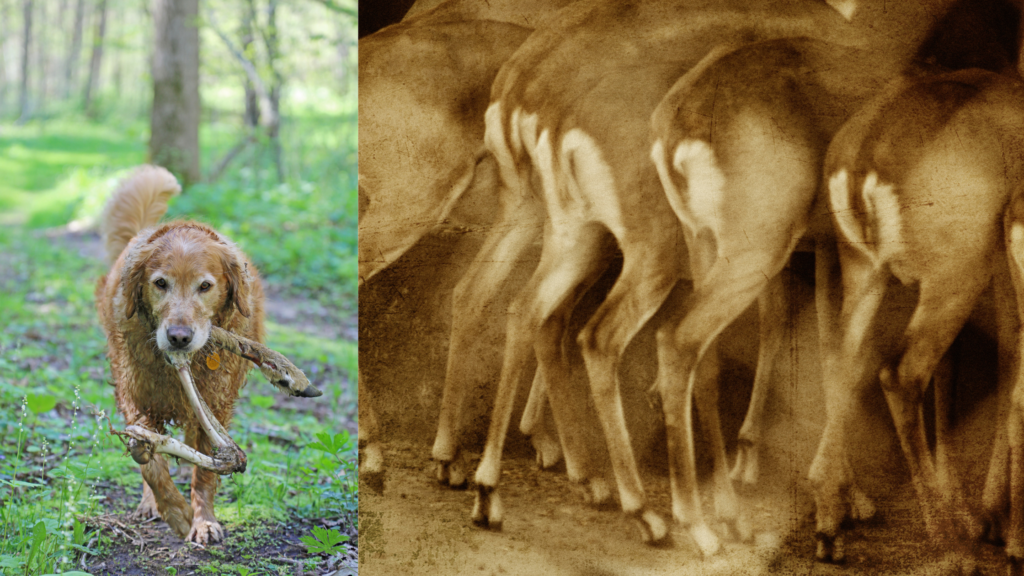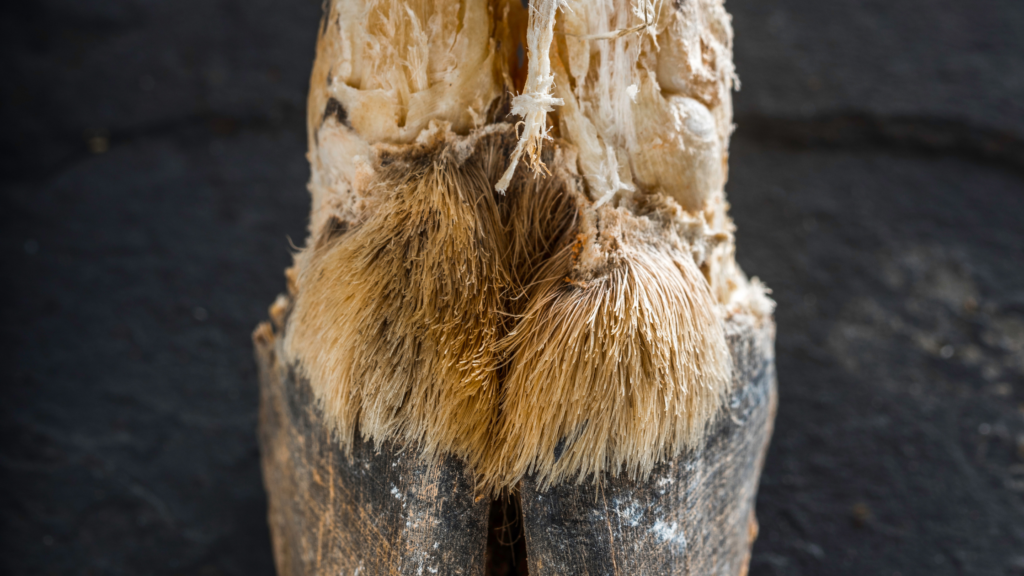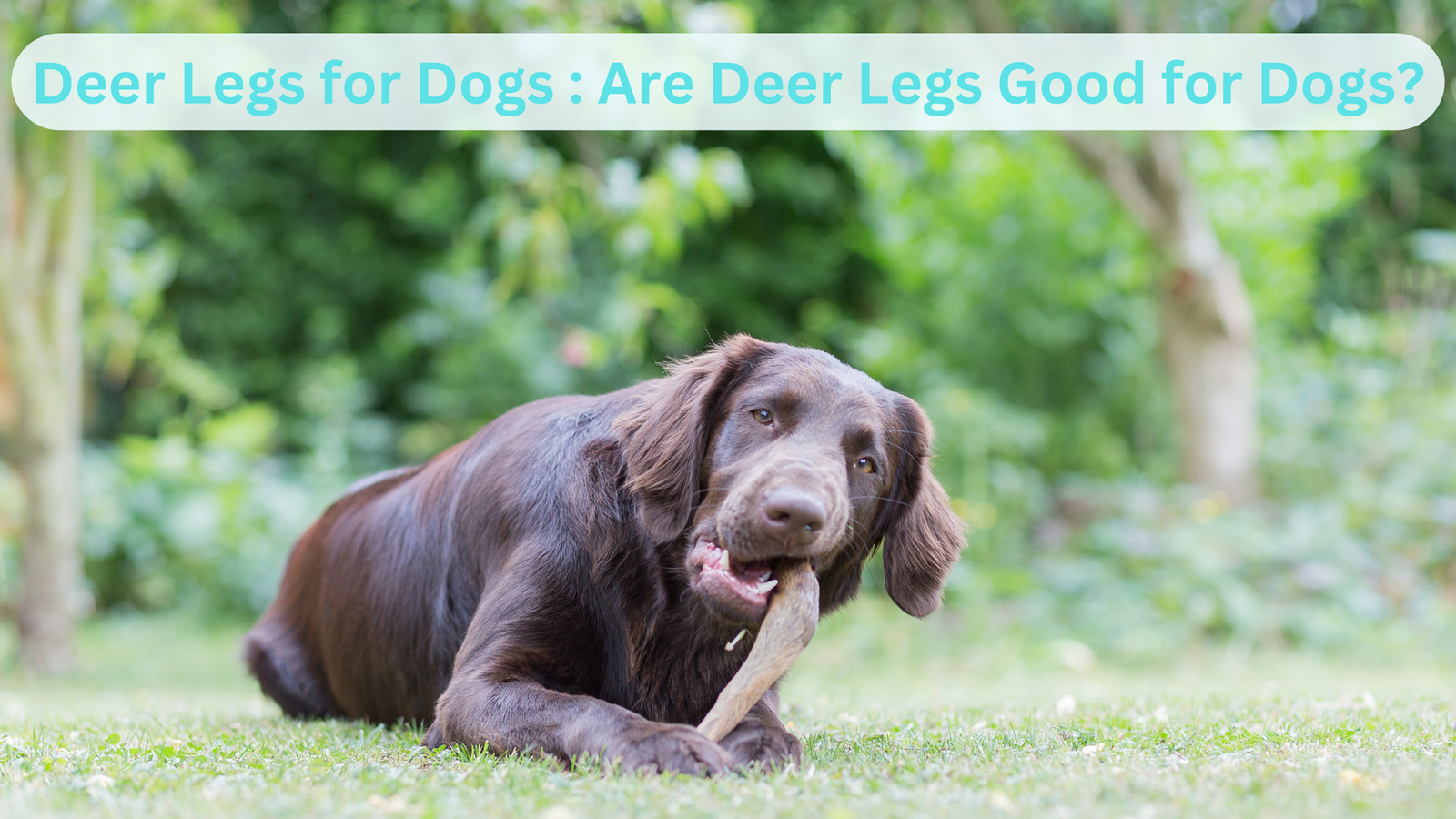Deer Legs for Dogs – You want to provide your furry friend the best nutrition as a pet owner. And deer legs may seem tempting when adding variety to your dog’s diet.
But are they safe and healthy for dogs to eat? In this article, we’ll explore the nutritional benefits and potential risks of feeding deer legs to your dog.
We’ll also answer common questions, including whether hairy deer legs are safe for dogs, what age dogs can have deer legs, and which parts of the deer are best for canine consumption.

Nutritional Benefits of Deer Legs for Dogs
Deer legs can provide a variety of nutritional benefits for dogs.
Here are some of the key Benefits of Deer Legs for Dogs
Protein and Amino Acids
Deer legs are a great source of protein, which is essential for building and maintaining muscle mass.
They also contain a range of amino acids, which are the building blocks of protein.
These include lysine, which helps with calcium absorption and collagen production, and arginine, which plays a role in heart health and immune function.
Vitamins and Minerals
Deer legs are rich in vitamins and minerals essential for overall health.
These include iron, which helps with oxygen transport and energy production, and zinc, which supports immune function and skin health.
They also contain vitamins B6 and B12, necessary for brain and nervous system function.
Joint Health
Deer legs can also be beneficial for dogs with joint issues.
They contain glucosamine and chondroitin, which support joint health and may help with arthritis and other joint-related conditions.
Additionally, the collagen in deer legs can help regenerate cartilage and connective tissue.
While deer legs can provide many nutritional benefits, feeding them in moderation and in the right way is essential to avoid potential risks and health issues.
Always consult your veterinarian before introducing new treats or supplements to your dog’s diet.
Are Deer Legs Good for Dogs? The Potential Risks of Feeding Deer Legs to Dogs
While deer legs can provide nutritional benefits for dogs, there are also potential risks associated with feeding them. Here are some of the critical risks to be aware of
Choking Hazard
Deer legs can be challenging and pose a choking hazard, especially for small dogs or aggressive chewers.
If your dog is prone to swallowing large pieces of food or treats, it’s best to avoid giving them deer legs or to supervise them closely while they chew.
Digestive Issues
Deer legs can also cause digestive issues in some dogs, mainly if they consume too much or if the legs are not appropriately prepared.
Overeating deer meat can cause upset stomach, vomiting, and diarrhoea.
Additionally, uncooked or undercooked meat can contain harmful bacteria like Salmonella or E. coli, which can cause serious illness in dogs.
Contamination and Bacteria
Deer legs can also be contaminated with harmful bacteria or other toxins, mainly if they are sourced from areas with high pollution levels or pesticide use.
It’s essential to ensure that the deer legs you feed your dog are from a reputable source and have been adequately processed and stored to minimize the risk of contamination.
To minimize these risks, preparing and feeding your dog deer legs safely and in moderation is essential.
Always supervise your dog while chewing on deer legs, and ensure that the legs are thoroughly cooked and cleaned before feeding.
Additionally, if you notice any signs of digestive upset or illness after feeding deer legs, contact your veterinarian immediately.
Are Hairy Deer Legs Good for Dogs?

Regarding feeding deer legs to dogs, one question often arises whether hairy deer legs are safe and nutritious for canine consumption.
The answer is that it depends on the individual dog and the specific type of deer leg.
Hairy deer legs, which may be covered in fur or hair, can pose a choking hazard or digestive issue for some dogs.
Additionally, the fur on the deer’s leg may be contaminated with dirt, bacteria, or parasites, which can make your dog sick.
That being said, some dogs may be able to tolerate and digest hairy deer legs without issue. Suppose you decide to feed your dog a hairy deer leg.
In that case, monitoring them closely for any signs of choking, vomiting, or diarrhoea is essential.
Suppose you’re concerned about the safety of feeding your dog a hairy deer leg.
In that case, it may be best to stick to deer legs that have been skinned and cleaned or consult your veterinarian for personalized advice.
Ultimately, it’s essential to prioritize your dog’s safety and well-being above any potential nutritional benefits that a deer leg may provide.
Also Read: Aztec Dog Collars: A Guide to History, Design, and Safety
What Age Can Dogs Have Deer Legs?
The appropriate age for a dog to have deer legs largely depends on the individual dog’s size, breed, and overall health.
Generally, it’s recommended that you wait until your dog is at least 6 months old before introducing deer legs into their diet.
This is because younger dogs may have difficulty digesting certain types of bones or may be more prone to choking on larger pieces.
Additionally, their digestive systems may still need to be fully developed, making it more difficult for them to extract nutrients from the deer leg.
Before introducing your dog to deer legs, it’s essential to consult with your veterinarian to ensure that your dog is healthy and ready for this type of food.
Your vet may recommend a gradual introduction to help your dog acclimate to the new food and minimize potential digestive issues.
Overall, it’s essential to prioritize your dog’s safety and well-being when introducing new foods into their diet, including deer legs.
By consulting with your vet and monitoring your dog’s response, you can help ensure your furry friend gets the nutrition they need while staying healthy and happy.
What Part of Deer is Best for Dogs?
Regarding feeding your dog deer, each part of the animal has potential benefits and drawbacks. Here are some things to consider when deciding which part of the deer is best for your dog:
Antlers
Deer antlers are a favoured chew toy for dogs due to their durability and natural source of minerals.
Antlers are high in protein and calcium, which can help support your dog’s dental and bone health.
However, it’s important to choose appropriately sized antlers for your dog to avoid choking hazards.
Additionally, some dogs are more aggressive chewers and could break a tooth or injure their mouth on antlers.
Bones
Deer bones are another option for dogs, as they can provide a natural source of calcium and phosphorus.
However, giving your dog raw, uncooked bones is essential, as cooked bones can become brittle and splinter, potentially causing digestive issues or injury.
Additionally, some bones may be too small or sharp for your dog, so it’s important to supervise them while chewing and remove any small or broken pieces.
Meat
Deer meat can be a good source of protein and other essential nutrients for dogs.
However, ensuring the meat is cooked thoroughly is vital to avoid any potential bacterial contamination.
Additionally, some dogs may have difficulty digesting certain types of meats, so monitoring their response and introducing new foods gradually is essential.
Ultimately, the best part of the deer for your dog will depend on their individual needs and preferences.
Consult with your veterinarian to determine which part of the deer would be most appropriate for your dog’s health and well-being.
How to Safely Feed Your Dog Deer Legs
If you’re interested in feeding deer legs to your dog, it’s essential to do so safely and responsibly. Here are some critical steps to take:
Preparing and Cooking Deer Legs for dogs
Before feeding deer legs to your dog, it’s essential to properly prepare and cook them to reduce the risk of contamination and digestive issues.
Start washing the legs thoroughly with clean water, then remove excess fat or connective tissue.
Next, cook the legs by boiling, grilling, or roasting them until fully cooked.
Avoid giving your dog raw or undercooked meat, as this can increase the risk of bacterial infection.
Portion Control and Frequency
Deer legs can be high in fat and calories, so feeding your dog in moderation is essential.
Please limit the number of deer legs your dog consumes and ensure they get a balanced diet that meets their nutritional needs.
Feeding deer legs too frequently or in large quantities can lead to digestive upset, weight gain, and other health issues.
Supervision and Monitoring
When feeding deer legs to your dog, it’s important to supervise them closely and monitor their behaviour and health. Watch for signs of choking, such as gagging, coughing, or difficulty breathing.
Remove the leg immediately if your dog shows any of these symptoms.
Additionally, watch for signs of digestive upset or illness, such as vomiting, diarrhoea, or lethargy. If you notice any of these symptoms, contact your veterinarian right away.
Overall, feeding deer legs to your dog can provide nutritional benefits, but it’s essential to do so safely and responsibly.
Always consult your veterinarian before introducing new treats or supplements to your dog’s diet. Follow these guidelines to minimize the risk of health issues or complications.
Also Read: Champagne for Dogs: Is Champagne safe for Dogs
Conclusion: Should You Feed Deer Legs to Your Dog?
Feeding your dog deer legs can provide them various nutritional benefits, such as protein, vitamins, and minerals.
However, it’s essential to consider the risks and drawbacks of feeding your dog deer legs, such as choking, digestive issues, and bacterial contamination.
Before introducing deer legs or any new food to your dog’s diet, it’s always best to consult with your veterinarian.
They can help you determine if deer legs are an appropriate and safe addition to your dog’s diet and can provide guidance on portion control and preparation methods.
Overall, if you decide to feed your dog deer legs, it’s essential to do so safely and responsibly.
Choose high-quality, fresh deer legs, and prepare them in a safe and easy way for your dog to digest.
With the proper precautions and supervision, feeding your dog deer legs can be a healthy and enjoyable addition to their diet.
